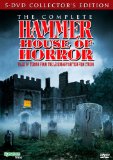| Reviews & Columns |
|
Reviews DVD TV on DVD Blu-ray 4K UHD International DVDs In Theaters Reviews by Studio Video Games Features Collector Series DVDs Easter Egg Database Interviews DVD Talk Radio Feature Articles Columns Anime Talk DVD Savant Horror DVDs The M.O.D. Squad Art House HD Talk Silent DVD
|
DVD Talk Forum |
|
|
| Resources |
|
DVD Price Search Customer Service #'s RCE Info Links |
|
Columns
|
|
|
Complete Hammer House Of Horror, The
Perfect October viewing for those looking for some classic U.K. chills. Synapse Films has released The Complete Hammer House of Horror, a five-disc, thirteen-episode collection of the 1980 television horror anthology. Featuring famous Hammer alumni from both in front of and behind the cameras (including Hammer horror icon Peter Cushing and Denholm Elliott, and directors Alan Gibson and Peter Sasdy among others), The Complete Hammer House of Horror's scary, gory, sometimes naughty, sometimes British black humor-amusing episodes are necessary viewing for any fan of 80s horror or the famous studio's theatrical releases. A couple of brief bonuses don't hurt these good-looking, uncut transfers.
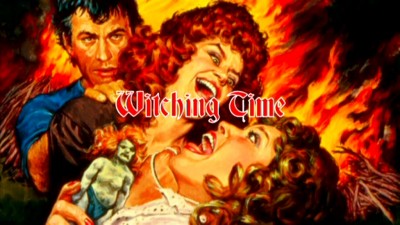
By 1979, the Hammer Films studio was in a lot of trouble. Once the world-leader in big-screen horror during the late 50s and early 60s, it had by the late 70s fallen by the wayside in terms of international box office market share. Changing audience tastes (Hammer's trademark, the Gothic chiller, was considered passé at this point) and its own failed experiments in both tweaking its spent formulas (its most recognizable franchise, the tried-and-true Dracula epics, updated to modern times, found little favor), and branching out into bigger-budgeted suspensers, eventually put the studio into receivership (Hammer's expensive 1979 Hitchcock remake, The Lady Vanishes, with, um...Elliott Gould and Cybil Shepherd, was a notorious, ruinous flop). Former Hammer executive Roy Skeggs, along with Brian Lawrence, both of whom had quit Hammer in the mid-70s to start their own production company, Cinema Arts, only to return again in '79, developed Hammer House of Horror as an inexpensive way to keep the brand afloat. In the best Hammer tradition―which was improvise on a shoestring budget―Skeggs moved Hammer Films to Buckinghamshire, locating the offices and studio facilities at Hapden manor house (shades of Down Place/Bray Studios), where much of Hammer House of Horror was shot. Co-produced with Skeggs' Cinema Arts and Sir Lew Grade's ITC Entertainment (which was also in deep trouble by 1980 with twin big-screen mega-flops, Can't Stop the Music and Raise the Titanic playing to empty houses), Hammer House of Horror drew good reviews and ratings when it aired first in the U.K. and later in international syndication (in the U.S., two episodes would be featured on "double bill" VHS releases hosted by Elvira, as well). Its success momentarily buoyed Hammer Films, leading to a second TV anthology foray in 1984, Hammer House of Mystery and Suspense (known here in the States as Fox Mystery Theater), before the studio effectively closed up shop for the next two decades.
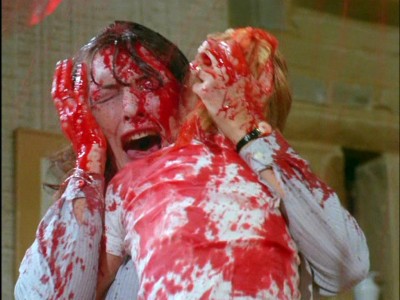
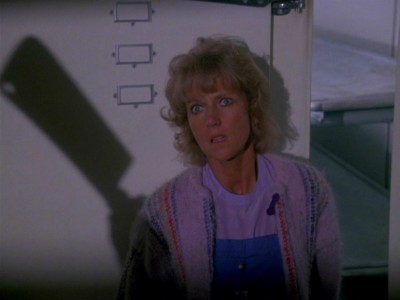
I had only seen a couple of the Hammer House of Horror episodes years and years ago (one of those Elvira tapes), so this complete collection caught me fresh. Of course, like most viewers from my generation, I grew up on big-screen Hammer horror movies popping up on Saturday afternoon TV and late, late movie shows, where their combination of "foreign" allure, eye-popping Technicolor, and the for-the-times heavier-than-usual gore and sex quotients, made them "must see" titles anytime they surfaced in the TV Guide. There's a good chance that most of the readers catching this review are well-versed in the Hammer style, anyway; so a rundown of the studio's aesthetics isn't really necessary here (suffice it to say: R-rated gore and PG-rated nudity are here as predictable mile-markers from the studio, while Hammer's often delightfully overblown, melodramatic approach to horror is on full display in many of these outings). While I wouldn't consider myself in any way an "expert" on the studio, I'm a big fan; I met this collection with a high degree of anticipation...and to make it short and sweet, it didn't let me down. Let's look very briefly at the episodes here, which are arranged on the discs according to original U.K. air dates.
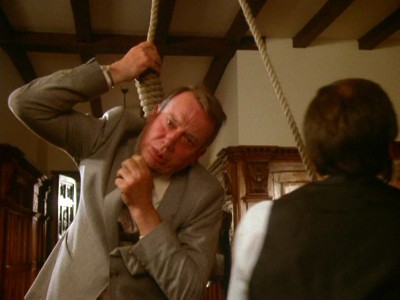
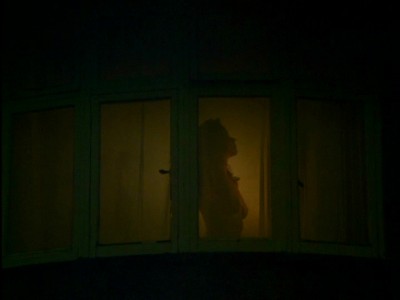
First up is Witching Time (which premiered in April, 1980, as a teaser "pilot" for the upcoming fall episodes), scripted by Hammer House of Horror's story editor Anthony Read (TV's Doctor Who and The Baker Street Boys) and directed by Don Leaver. Jon Finch (Frenzy) is a preoccupied film composer who, upon suspecting his wife Prunella Gee's infidelity, is visited at his isolated farm by The Rocky Horror Picture Show's Patricia Quinn...who happens to be a horny, 17th century witch. A solid start to the series, Witching Time benefits from always-good Finch's tortured performance...as well as Hammer keeping up its 70s tradition of sex-soaked mayhem by having Quinn frequently topless and sexy Gee running around in skin-tight panties and bra (Leaver's blocking at the fiery finale, however, is a bit wonky, diluting the pay-off). Next, The Thirteenth Reunion, scripted by The Horror of Frankenstein's Jeremy Burnham and directed by Peter Sasdy (the terrific Hammer outings Taste the Blood of Dracula and Countess Dracula), has Julia Foster as an investigative reporter stumbling onto strange doings connected with a "Think Thin" weight loss clinic...where people wind up dead and dismembered. A suitably gory little exercise that still comes up short (opens with a beheading, off-camera, and closes with the same), The Thirteenth Reunion runs behind most viewers who can readily figure out the "twist" ending (Foster's performance is too patently "plucky" to help, either). Fun to see familiar faces Norman Bird and George Innes as the chop-happy mortuary workers, though.
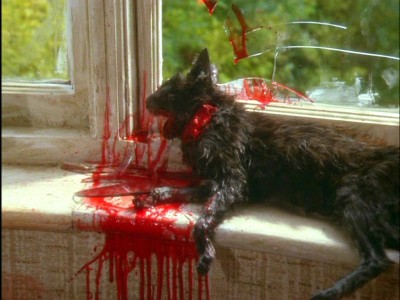
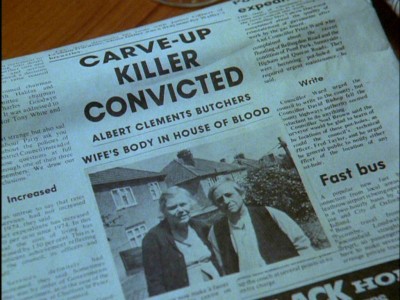
Rude Awakening, one of the series' best episodes, directed much better by Sasdy again, from a script by U.K. TV's Dracula, Gerald Savory, finds Denholm Elliott caught in an endlessly recycling waking nightmare of being married to snoring Pat Haywood, lusting after his luscious secretary Lucy Gutteridge, and being accused of murdering Haywood inbetween his own hangings and fatal brain operations. A beautifully-sculpted entry, with Sasdy expertly ratcheting up the tension to a suitably nerve-wracking pitch, Rude Awakening is also frequently hilarious, with a subtly perverse undertone (check out gorgeous Gutteridge's stereotypical fantasy outfits) and a turn by Elliott that's a comedic gem. Growing Pains, however, is one of the series' weakest entries. Matthew Blakstad, of Young Sherlock Holmes (fame?), is a strangely self-possessed little boy adopted by scientist Gary Bond and government diplomat Barbara Kellerman, after their own boy dies ingesting some of Bond's protein-rich plant food. Of course, Blakstad isn't what he seems to be, while the ghost of the dead son shows up to teach everyone a lesson. What, exactly, that lesson is, is anyone's guess in this pseudo-"meaningful" episode that somehow tries vainly to drag in world poverty, starving African nations, and workaholic guilt into a standard and fairly draggy ghost story (about the only thing worth mentioning are the gore scenes, including maggot-covered steaks and a whole bunch of lab rabbits torn to bloody bits).
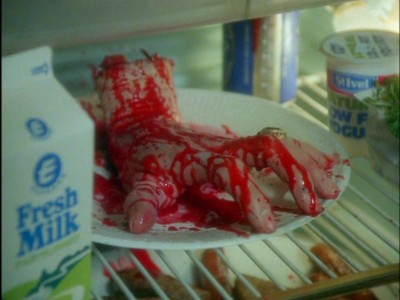
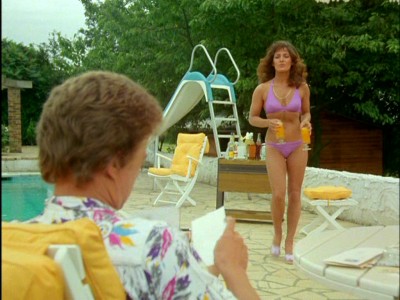
In The House That Bled to Death, Nicholas Ball and Rachel Davies move into a council flat that has a nasty pedigree: the previous owner had freaked out and poisoned and butchered his wife. This isn't good news for them or their young daughter, Emma Ridley (Return to Oz), or especially Ridley's cat, "Timmy," who winds up with his neck slashed open on a mysteriously broken window. Before you can say "Amityville Horror," the young family is terrorized by the haunted house. Directed for maximum scares by Tom Clegg, The House That Bled to Death has a nasty, claustrophobic feel to its cramped, grotty interiors, with a bloody sensibility that's highlighted by a wonderfully over-the-top moment: a children's birthday party absolutely drenched in blood from an haunted overhead water pipe. A nice double-twist ending settles the score for all the guilty involved―a good example of Hammer House of Horror's nicely fatalistic "nobody gets out alive" strategy. In the well-done but familiar Charlie Boy, directed by Robert Young (Hammer's Vampire Circus), Leigh Lawson inherits an African fetish doll and soon everyone's dropping like flies. With a storyline this recognizable, you had better come up with some entertaining (if not original) murders, and Charlie Boy's are pretty good, from falling on a thresher, to a crossbow to the stomach, to a nicely-blocked finale where someone thinks they're okay...until they fall on a hatchet.
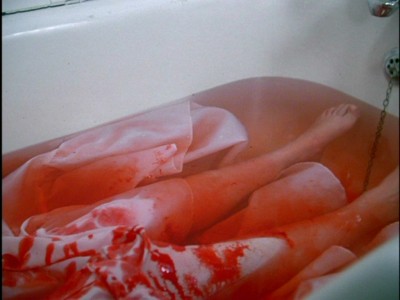
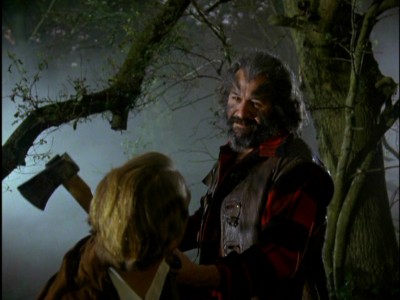
In what many fans consider the series' best episode (I think it's a toss-up with the final two outings...), horror icon Peter Cushing shows up in The Silent Scream. Newly-sprung convict Brian Cox (Hannibal Lecter!) feels it's necessary to go thank stranger Cushing who used to visit him in prison with gifts of cash. Cushing, who runs a tatty little pet shop, has something really interesting to show Cox in the back: a hidden laboratory filled with predatory beasts that are kept in their open cages by high-voltage electricity. When Cushing asks Cox to watch the pets for the weekend, Cox can't resist cracking open Cushing's safe, and that's when the fun begins...as Cox drops down into his very own cage.... A tight, concise thriller that drives the viewer crazy with anxiety, The Silent Scream has all kinds of intriguing sub-themes winding through it for a such a short little exercise (WWII concentration camps, failed marriages, learned nature of criminality), with a final final twist ending you won't see coming. A winner. Children of the Full Moon, however, is well-intentioned but pretty standard stuff, with a title that should just about wreck any suspense it might have had: stranded couple Christopher Cazenove and sexy Celia Gregory wind up at former bombshell Diana Dors' backwoods house...with all her little werewolves children. It's always good to see Robert Urquhart (another Hammer alum), but this story is too predictable to elicit any scares.
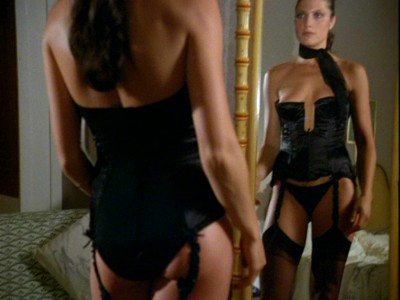
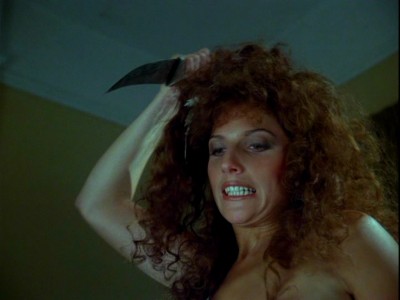
In Carpathian Eagle, copper Anthony Valentine investigates a series of Ripper-like murders where the male victims have their hearts cut out during sex. Help in the form of an introduction to suspect Sian Phillips comes from writer Suzanne Danielle. A twisty little murder mystery you'll probably figure out before it's over, Carpathian Eagle benefits mightily from its excellent cast; Valentine really holds it together, while Phillips is a treat as a weary exile (look for Pierce Brosnan in a small bit...although why you'd want to do that is anybody's guess). Too bad almost all the violence is out of camera range. Guardian of the Abyss, on the other hand, feels like an old-timey Hammer exercise: head devil worshipper John Carson (Captain Kronos: Vampire Hunter) is hot on the heels of would-be sacrifice Rosalyn Landor, but he has to get by antiques dealer Ray Lonnen, who also has a valuable scrying glass in his possession―a portal to the underworld. Sure it's a well-trodden path here...but from any collection of episodes from the house of Hammer, you'd expect at least one to deal with devil worshipers, and Guardian of the Abyss, directed by old pro Don Sharp (Hammer's Kills of the Vampire, Rasputin, the Mad Monk), delivers the goods here. Visitor from the Grave, directed by Sasdy from Hammer vet scripter Anthony Hinds story, is no less predictable (and no less entertaining), with gorgeous nutcase Kathryn Leigh Scott (of Dark Shadows fame) being gaslighted by shady husband Simon MacCorkindale (perfectly cast here). Blake's 7 fans will no doubt enjoy Gareth Thomas here in a dual role, while Scott, a true beauty who plays "fragile" very well, runs around in lingerie for half the show―thank you very much, Hammer House of Horror.
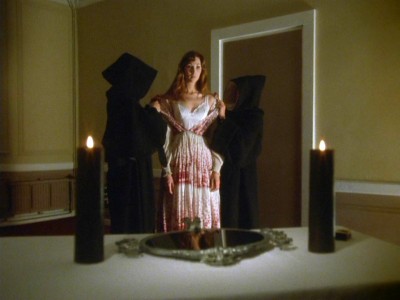
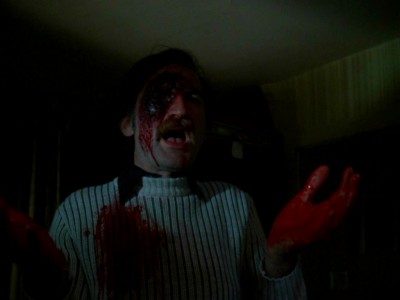
Finally, Hammer House of Horror winds down with two superlative entries: The Two Faces of Evil and The Mark of Satan. In the first, Gary Raymond (Look Back in Anger) fights off a murderous, raincoated hitchhiker who attacks him, crashing his car. His wife, Anna Calder-Marshall, wakes up in hospital to find her husband critically injured and the hitchhiker supposedly dead...or is he? As disc narrator Shane M. Dallmann (who intros all the episodes here) correctly states, detractors of The Two Faces of Evil who say it doesn't make sense, obviously never had a nightmare before. This episode's surreal, waking terror atmosphere is expertly crafted by director Alan Gibson (Hammer's The Satanic Rites of Dracula, Dracula A.D. 1972), utilizing odd angles and off-kilter blocking to achieve a genuinely scary effort. The Mark of Satan, directed by Don Leaver and starring Peter McEnery finds McEnery, a hospital morgue attendant, rapidly losing his mind as he starts to make paranoid connections between everything and the number "9." Brilliantly plotted, with some rather disturbing shots from Leaver (head and shoulders above his earlier effort for Hammer House of Horror, Witching Time), The Mark of Satan proved too grisly and disturbing for U.S. distributors back in 1980; it was never broadcast here. And while there are some nasty shocks (McEnery stabbing his mother is truly off-putting), some funny little bits unexpectedly pop up (McEnery trying to unclog the autopsy table's sink) amid the frightening, ultimately depressing machinations (McEnery scores the series' best performance; he's remarkable). A terrific end to the series...it's just too bad it had to end so soon.
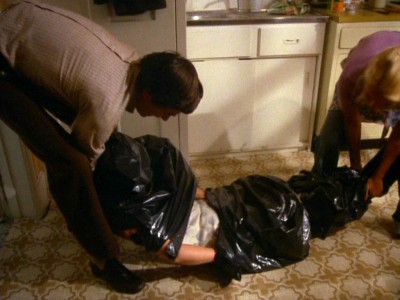
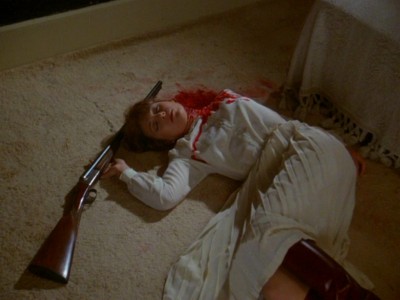
The DVD:
The Video:
The full-screen, 1.33:1 video transfers for The Complete Hammer House of Horror look quite good, with mostly saturated color, a sharpish image, few screen anomalies, and no discernable PAL conversion issues. Nice.
The Audio:
The Dolby Digital English split mono audio track is effectively re-recorded here, with no fluctuations and minimal hiss. No subtitles or closed-captions available, however.
The Extras:
Besides Shane M. Dallmann's brief intros to the episodes (which are to-the-point and informative), two interviews with Kathryn Leigh Scott (8:22) and actress Mia Nadasi (6:08) are included. Nadasi is married to director Peter Sasdy...but we get more info on what it's like to work him from Scott (who must have a painting of herself rotting away in an attic somewhere―she looks sensational).
Final Thoughts:
Excellent television foray into the horror anthology genre from the premiere horror studio. The Complete Hammer House of Horror is perfect Halloween viewing for anyone interested in 80s horror and/or Hammer Films: the scripts are tight, the direction nimble, and the performances spot-on, with plenty of gore and slight nudity to keep you tuned in. I'm highly recommending The Complete Hammer House of Horror.
Paul Mavis is an internationally published movie and television historian, a member of the Online Film Critics Society, and the author of The Espionage Filmography.
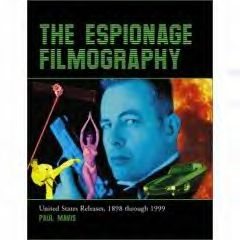

|
| Popular Reviews |
| Sponsored Links |
|
|
| Sponsored Links |
|
|
| Release List | Reviews | Shop | Newsletter | Forum | DVD Giveaways | Blu-Ray | Advertise |
|
Copyright 2024 DVDTalk.com All Rights Reserved. Legal Info, Privacy Policy, Terms of Use,
Manage Preferences,
Your Privacy Choices | |||||||









